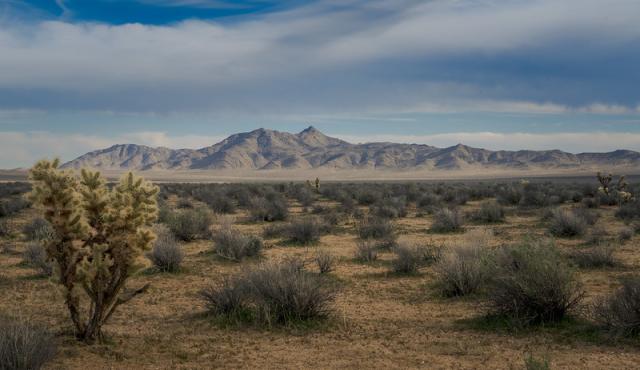BLM invests $2.5 million for cultural landscape study and predictive modeling in California Desert
Organization:
BLM Office:
Media Contact:
PALM SPRINGS, Calif. - The Bureau of Land Management announced today that $2.5 million from the Biden-Harris administration’s Inflation Reduction Act will be invested in a cultural landscape study and predictive model to identify and better understand the impacts of renewable energy development on Tribal ancestral lands and other significant landscapes in the California Desert Conservation Area with an aim to better site and process renewable energy development applications in the area.
“These historic investments from President Biden’s Investing in America agenda will support our ability to deploy clean energy, while protecting vital cultural resources in the California desert,” said BLM California State Director Karen Mouritsen. “The BLM is proud to support locally led and locally designed efforts to better understand the impacts on Tribal and cultural resources.”
The California Desert Conservation Area was designated by Congress in the Federal Land Policy and Management Act of 1976, recognizing the importance of this area’s resources and the need for a comprehensive long-range plan. The California Desert Conservation Area Plan was amended in 2016 by the Desert Renewable Energy Conservation Plan. This landscape-level conservation plan for 10.8 million acres of public lands in the desert regions of seven California counties – Imperial, Inyo, Kern, Los Angeles, Riverside, San Bernardino and San Diego – is a collaborative effort between the Bureau of Land Management, California Energy Commission, California Department of Fish and Wildlife, and the U.S. Fish and Wildlife Service to effectively manage renewable energy development, preserves unique cultural sites and valuable desert ecosystems, and provides outdoor recreation opportunities.
The cultural landscape study and predictive model is being developed in consultation with California Tribes, Tribal organizations, and the California State Historic Preservation Office to fulfill the requirements outlined in the Desert Renewable Energy Conservation Plan - Section 106 Programmatic Agreement. Both efforts will identify resources of religious and cultural significance in a way that enhances renewable energy project siting and avoids resource conflicts. The result will be a more efficient and predictable Section 106 process that will significantly improve project planning and timelines, while minimizing impacts to cultural resources across a broad geographic area.
Since 2009, State and Federal agencies have approved dozens of renewable energy projects in the southern California desert. These projects have established California as a leader in utility-scale energy development and have put California on track to achieve its short-term renewable energy goals.
The BLM manages about 245 million acres of public land located primarily in 12 western states, including Alaska, on behalf of the American people. The BLM also administers 700 million acres of sub-surface mineral estate throughout the nation. Our mission is to sustain the health, diversity, and productivity of America’s public lands for the use and enjoyment of present and future generations.

